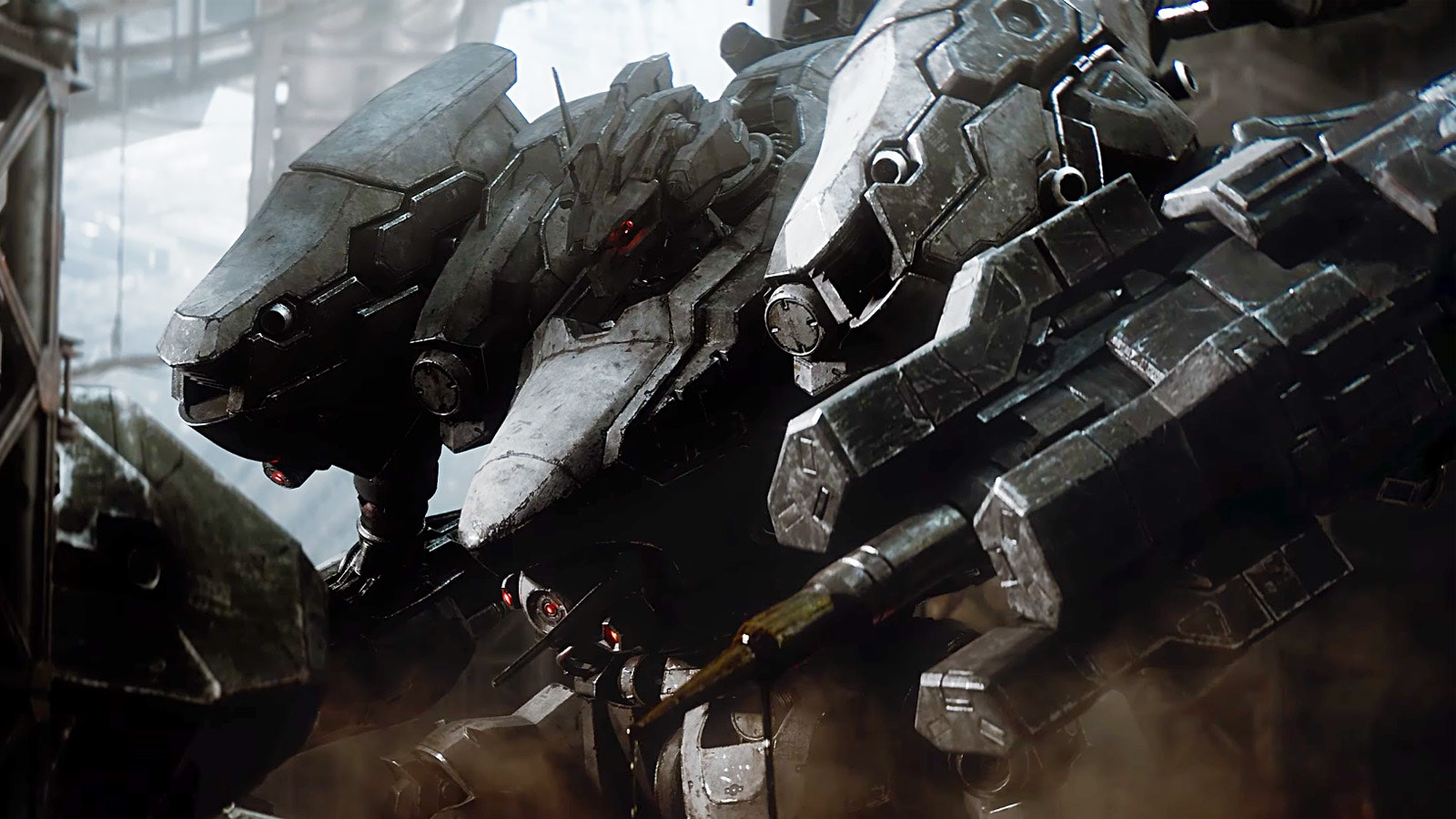
The mission had gone according to plan. I’d destroyed the prototype mechs and gotten out with minimal damage. That all changed when a massive battleship appeared overhead, peppering me with dozens of rockets and rounds, forcing me into a balletic display of dodging as I surged up toward the bridge, determined to take the behemoth down entirely by myself. When the dust settled I was left breathless, just like so many other fights before.
Armored Core IV: Fires of Rubicon feels like you’ve been dropped into the center of an intense mecha anime. It’s one of the most superbly intuitive combat experiences I’ve ever seen in decades of playing video games. This is an unparalleled experience in terms of feel and responsiveness, fleshed out with deep and engrossing customization and a fittingly cryptic story that draws you deeper into its world and lore with each step.
Armored Core VI is nothing short of another FromSoftware masterpiece.
Get In the Robot
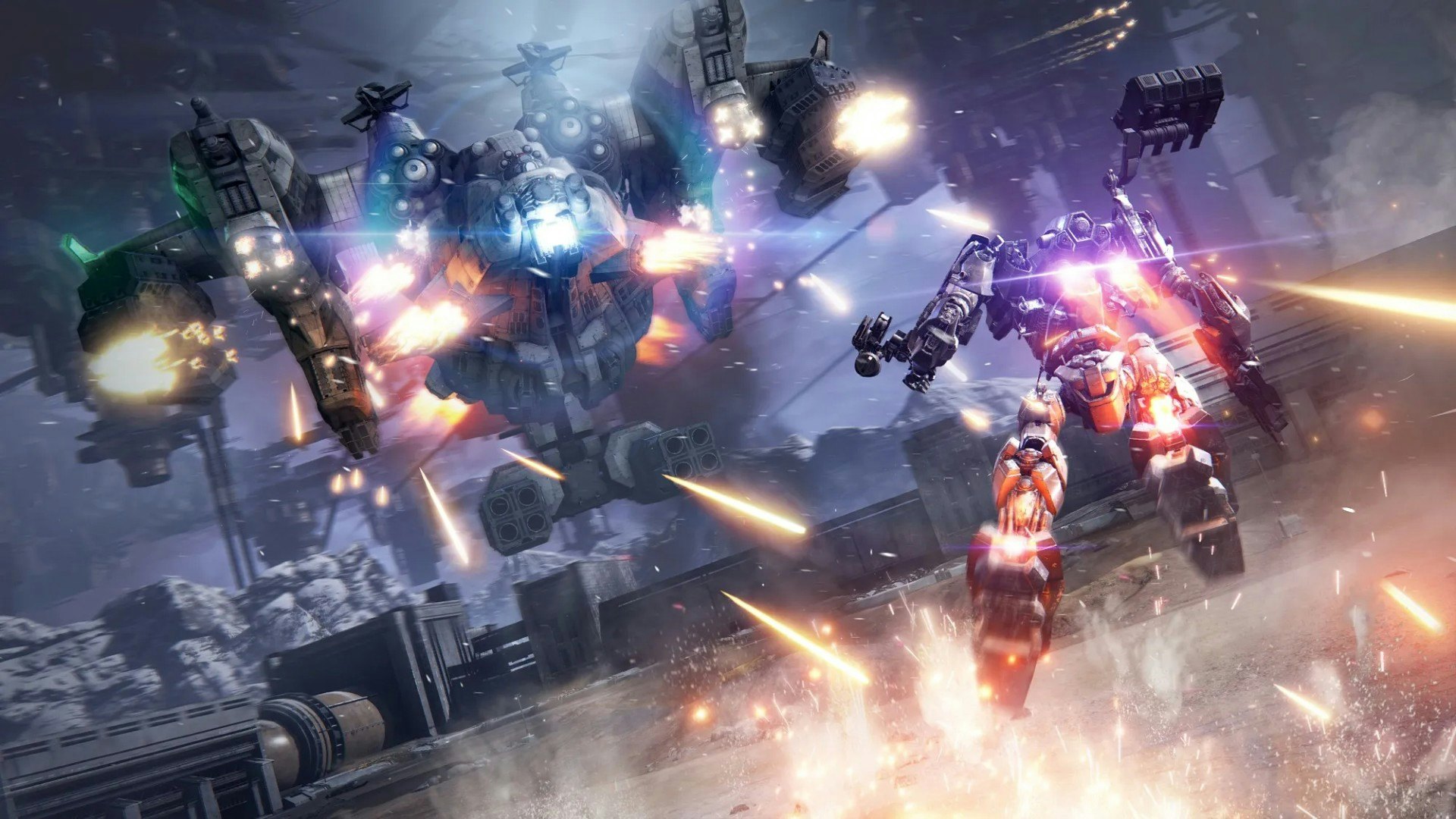
It’s been nearly ten years since the release of the last Armored Core game, with 2013’s Verdict Day. In that time, developer FromSoftware released the entirety of the Dark Souls series, Bloodborne, Sekiro, and Elden Ring. This is a studio that has evolved by leaps and bounds with each subsequent release to become one of the most famous and revered in the world.
ACVI is a fascinating fusion of the series’ past and the inimitable refinement of modern From’s design sensibilities. This is an Armored Core game at its heart, and it also draws liberally from the Souls series in terms of combat, boss design, and gameplay. It’s a return to the series’ trademark style of storytelling, delivering all of its narrative through mission briefings, in-action dialogue, and collectible data logs.
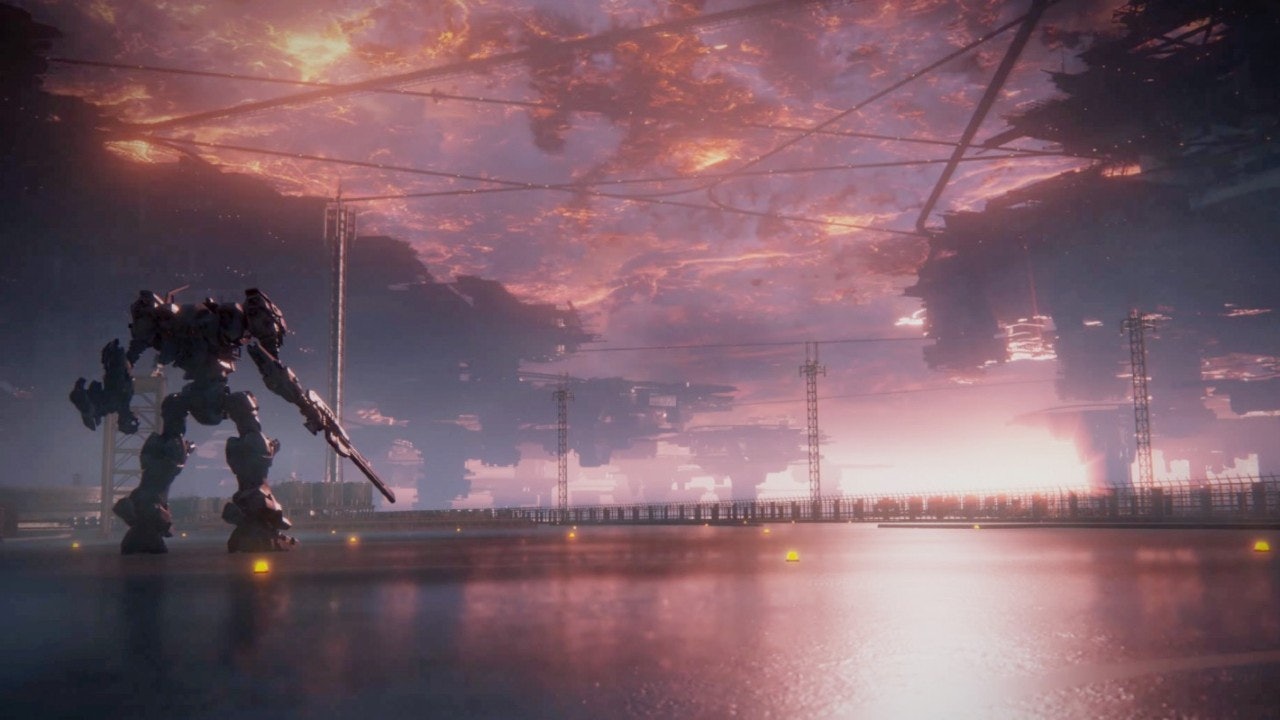
You play as a genetically-enhanced “augmented human” who’s only referred to by a number, 621. You and your handler, Walter, arrive on the planet Rubicon and start undertaking mercenary missions. On Rubicon, rival corporations are battling for control of a vital resource called Coral, while the Rubicon Liberation Front seeks to free the planet from oppression. To say the storytelling is cryptic is an understatement. There’s a fascinating narrative here, but it takes a bit of work to uncover, though in my playthrough it made the experience even more rewarding.
There are actually three different endings to ACVI, and at various points, you’ll make “decisions” by choosing from two missions that support different factions. Beating the game once lets you launch right into a second playthrough, which is implemented exceptionally well. On that second playthrough, you can make different decisions, and discover extra wrinkles and details that expand the story, as well as increase the difficulty of certain missions. That fascinating drip-feed narrative helps ACVI’s deep gameplay systems shine even brighter.
Meching Around
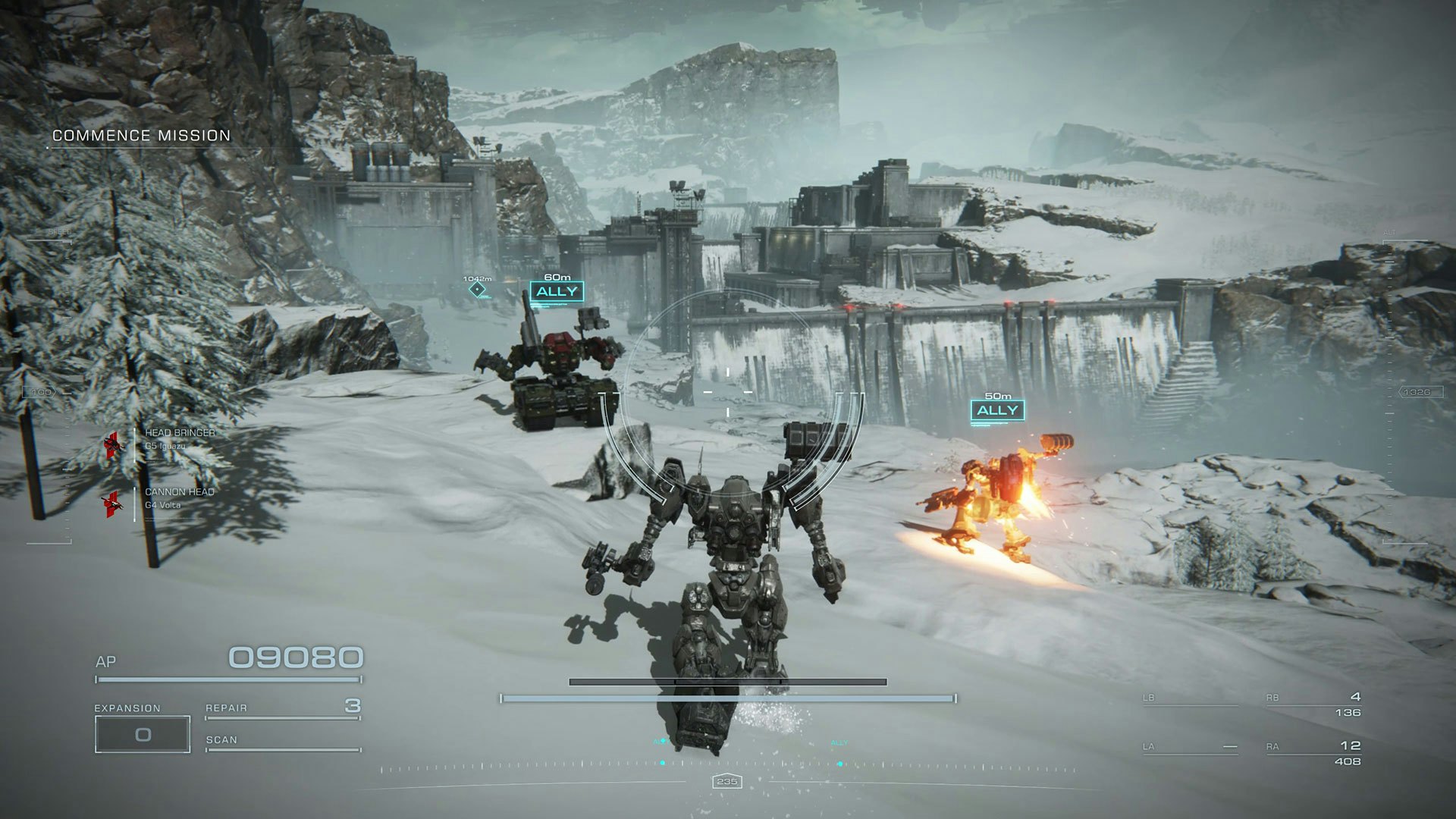
Essentially, ACVI is split into two halves: AC Assembly and combat missions. This is where you can see the game appealing to two camps of players: longtime fans and series newcomers who are familiar with Souls games. You can customize nearly every piece of your mech, if you want, fine-tuning the booster, body parts, hand weapons, and shoulder weapons. On top of that, there’s an excruciatingly detailed system for customizing colors, wear and tear, and even creating custom images for decals. There’s an absurd amount of depth on offer here, just like in past AC games, but you don’t have to engage with it if you don’t want to. As you progress, you’ll also unlock schematics that can auto-build an AC for you based on existing mechs in-game, for a small amount of money.
The design of your mech is a major factor in combat, which encourages experimentation at every turn. ACVI’s missions typically take roughly 10-15 minutes, although bigger missions with bosses can go longer. There’s a real focus on speed and momentum, as you’ll want to rely on using dodge boosts to zip around missiles, enemies, and other threats.
There’s a huge amount of variety in how you build your mech, whether you want a heavy tank loaded with missiles and gatling guns, or an agile speedster outfitted with plasma rifles and swords. Any build can be viable for any mission, and that variety is reflected in the mission design itself.
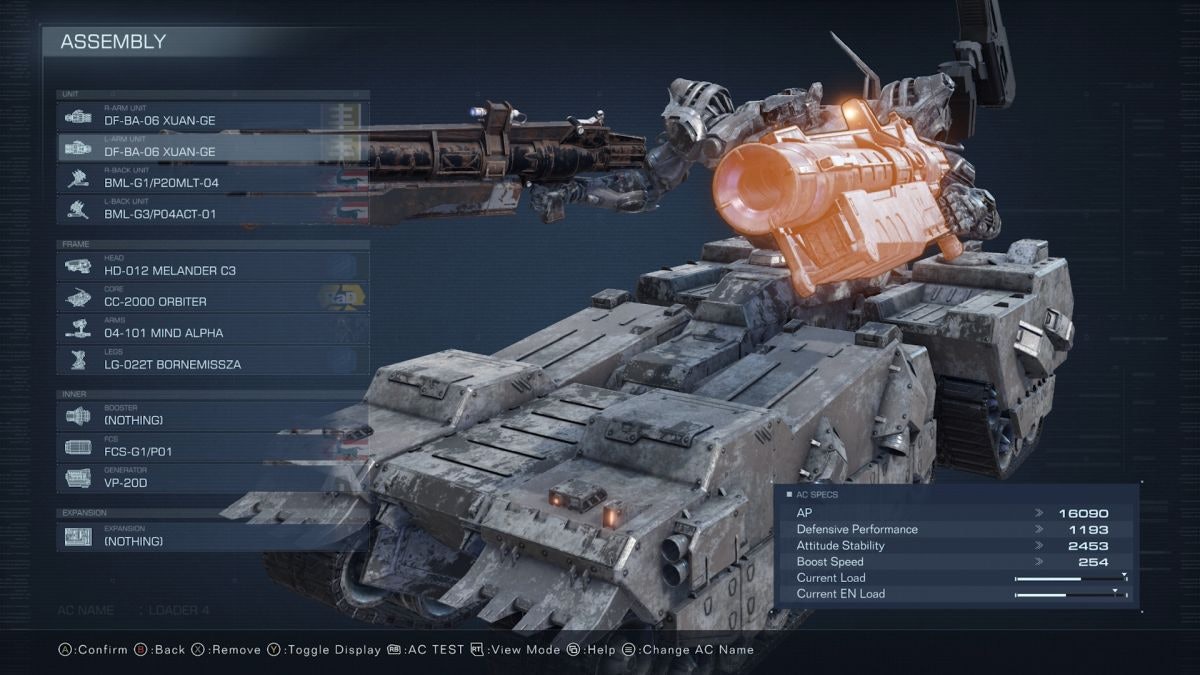
Nearly each and every level in ACVI feels distinct. In one, you’re diving into an underground facility to destroy a reactor, then racing to escape before the blast catches you. In another, you’re scaling a massive quadrupedal mining machine, taking down reactors along the way, and dodging a massive eye that shoots lasers. Elsewhere, you might be defending a trio of missiles from waves of increasingly-difficult enemies.
ACVI plays out at a blistering pace, much faster than anything FromSoftware has done in years. But the key difference from past Armored Core games is a captivating sense of verticality in every mission and environment. Jumping over a tough enemy is often as valid a tactic as dodging around them, and once you get the hang of thinking vertically, these maneuvers become second nature. What’s even more impressive is that this blazingly fast combat is supported by fantastic technical performance, with quite literally no slowdown or framerate issues to speak of. ACVI ran like a dream on my PS5, consistently staying at 60fps, even while the world blew up around me.
Firing on All Cylinders
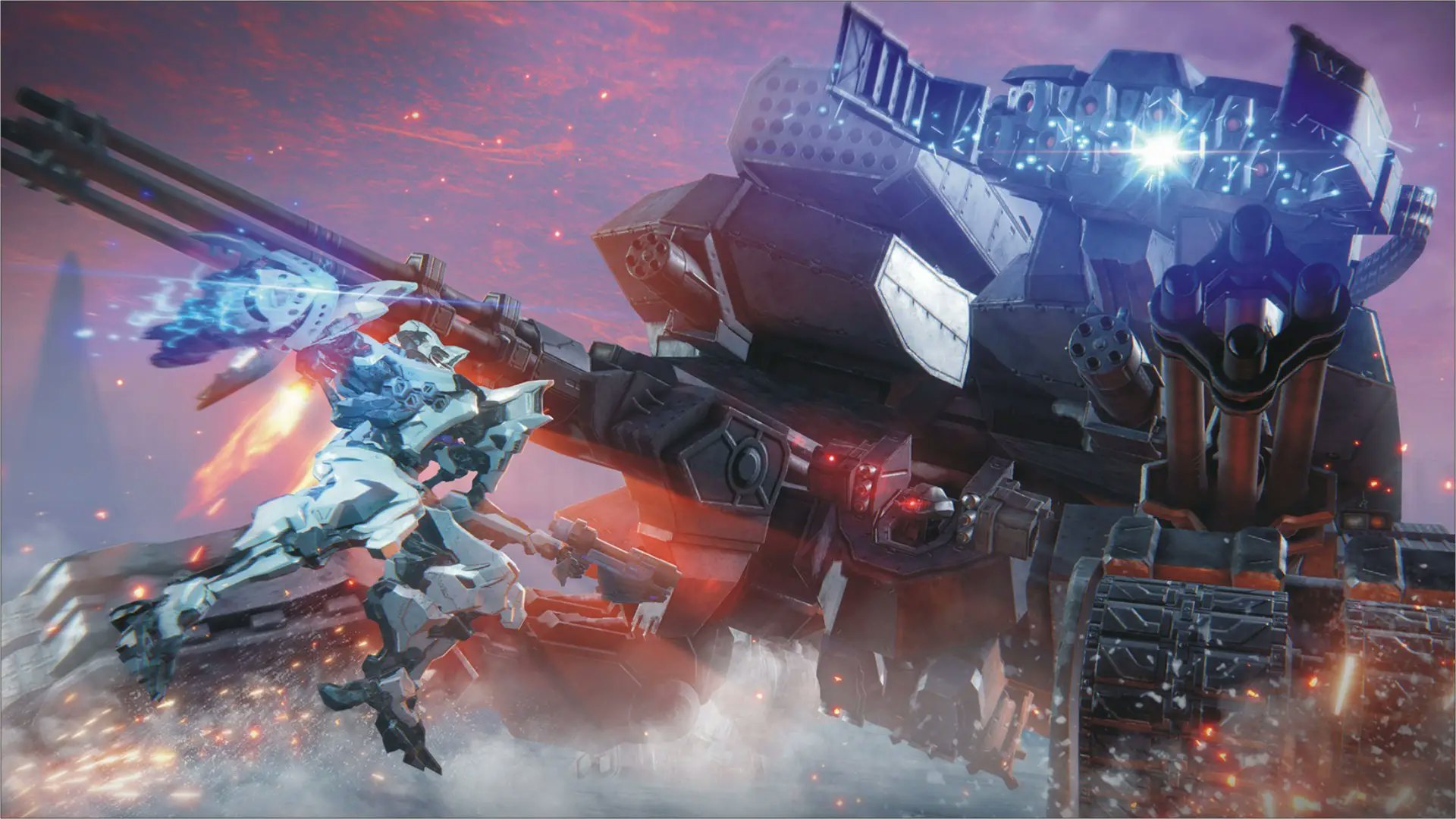
The absolute highlight of ACVI is the climactic boss battles, which is where the Souls-like design starts to really shine through. Each big bad has unique attack patterns that you’ll need to learn — and effectively counter. With the wide array of mech and weapons loadouts, figuring out what build might work best against a boss is one of the most gratifying elements of the game.
Best of all? There’s no one way to do things. ACVI gives you countless options for overcoming these immense challenges. Maybe you rejigger your loadout and try a different approach, or you keep trying to learn the enemy’s pattern. Either way, there’s an undeniable sense of reward when you overcome a nail-biting showdown, a release that simply can’t be matched by most other action games.
Even though gameplay mostly boils down to blowing up a lot of things, there’s a staggering amount of variety packed into that. It’s easy to replay the game multiple times simply because of the sheer number of builds and options you can try out — the replay value is truly off the charts.
There are plenty of mech games out there, but no other experience has ever captured the speed, ferocity, and weight of piloting a massive machine quite like ACVI. Make no mistake, this is a daunting challenge filled with all the intense battles and difficulty spikes you’d expect from FromSoftware. The key difference here — much like Elden Ring — is that you’re given a dizzying array of options for surmounting those obstacles.
Armored Core VI: Fires of Rubicon is an utterly unforgettable experience with satisfyingly crunchy combat, a fascinating narrative with surprising twists, and deep customization for mech-heads. If this is the future of Armored Core, then the future is bright indeed.
10/10
Armored Core VI: Fires of Rubicon launches on August 25 for PlayStation, Xbox, and PC. Inverse reviewed the PlayStation 5 version.
INVERSE VIDEO GAME REVIEW ETHOS: Every Inverse video game review answers two questions: Is this game worth your time? Are you getting what you pay for? We have no tolerance for endless fetch quests, clunky mechanics, or bugs that dilute the experience. We care deeply about a game’s design, world-building, character arcs, and storytelling come together. Inverse will never punch down, but we aren’t afraid to punch up. We love magic and science-fiction in equal measure, and as much as we love experiencing rich stories and worlds through games, we won’t ignore the real-world context in which those games are made.







